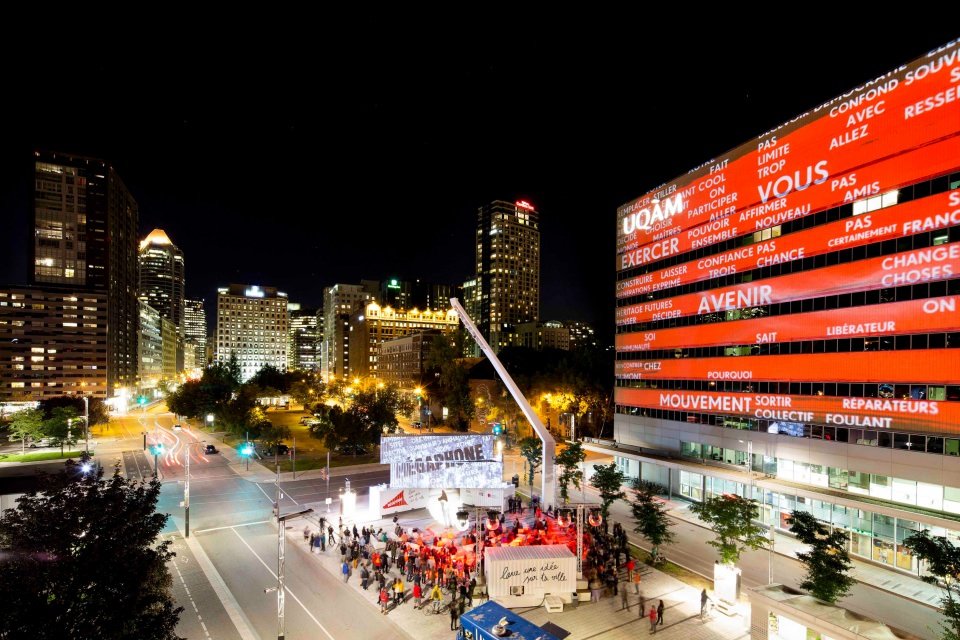
Harvesting the Interactive Potential of Digital Displays in Public Space: The Poetics of Public Interaction
Claude Fortin, PhD Thesis (2015)
Supervisor: Dr. Kate Hennessy
Committee Member: Dr. Carman Neustaedter
Committee Member: Prof. Jim Bizzocchi
Abstract
A digital public display is a platform of media architecture that can either take the form of a large-size stand-alone screen, which relies on LED, LCD or plasma technology, or else a video projection that illuminate the façades of buildings in dark settings. Like nondigital advertising billboards since the nineteenth-century, digital public displays typically tend to be used to deliver commercial content, publicize news and offer context-relevant information in accordance with the elementary one-way transmission model of communication. As a result, until recently, most public media displays remained non-interactive. But now that computational systems can support digitally-mediated interactions on this platform, interactive screen technology is becoming an increasingly common component of new urban digital infrastructures in semi-public and public space. This doctoral research examines how the interactive potential of digital public displays might be unleashed at the scale of the built environment if designers were to focus on their public vocation and their social affordances. In the past decade, display-based systems have mostly been studied, designed and produced top-down style by experts. However, some researchers have called for new methodologies that could help effectively bridge the gap between the top-down prescriptive design approaches and the bottom-up appropriative digital practices that shape the in situ usages of this urban technology. This doctoral work strives to take up this challenge by demonstrating that multisited design is an approach that can be used to shape the conception and function of interactive digital public displays in the context of urban infrastructural planning. An interpretive outcome of participant observation, this dissertation also reports on field observations made over two years, presented as a narrative punctuated with micro-analyses on design research. This further contributes to the literature by, first, implicitly suggesting throughout that the concept of real time public interaction can provide an abstraction that facilitates thinking about the design of interactive digital public displays; second, presenting thick descriptions that evoke four new possible purposes for this platform; and third, developing the concept of social affordances tailored to public space.
Keywords: Interactive dynamic digital displays, Public interaction, Social affordances, Multisited design, Technology infrastructures, Urban computing



